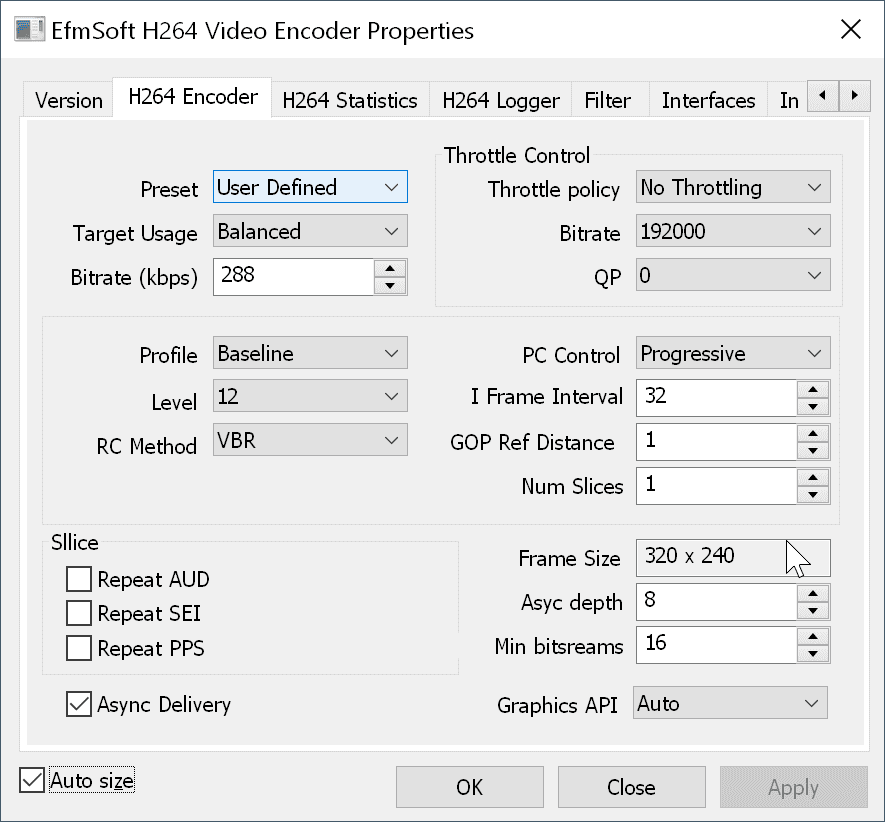H264 codec is the most widely used codec on the planet, with significant penetration in optical disc, broadcast, and streaming video markets. However, many uses of H264 are subject to royalties, something that should be considered prior to its adaption. Other factors to consider include comparative quality against other available technologies, like Google’s WebM, as well as the general availability of decoding capabilities on target platforms and devices. The intent of the H.264/AVC project was to create a standard capable of providing good video quality at substantially lower bit rates than previous standards (i.e., half or less the bit rate of MPEG-2, H.263, or MPEG-4 Part 2), without increasing the complexity of design so much that it would be impractical or excessively expensive to implement. This was achieved with features such as a reduced-complexity integer discrete cosine transform (integer DCT), variable block-size segmentation, and multi-picture inter-picture prediction. An additional goal was to provide enough flexibility to allow the standard to be applied to a wide variety of applications on a wide variety of networks and systems, including low and high bit rates, low and high resolution video, broadcast, DVD storage, RTP/IP packet networks, and ITU-T multimedia telephony systems.
H.264 standard
The H.264 standard can be viewed as a “family of standards” composed of a number of different profiles, although its “High profile” is by far the mostly commonly used format. A specific decoder decodes at least one, but not necessarily all profiles. The standard describes the format of the encoded data and how the data is decoded, but it does not specify algorithms for encoding video – that is left open as a matter for encoder designers to select for themselves, and a wide variety of encoding schemes has been developed.
Codec
The proposed H264 codec based on Intel Media SDK. The filter uses hardware accelerated video encoding technology built into some Intel processors. Quick Sync technology was introduced with Sandy Bridge architecture on January 9, 2011. Quick Sync, like other hardware video encoding technologies, produces worse quality than using only the processor’s power, but its use can significantly reduce the load on the central processor when encoding video.
Requirements
Intel Quick Sync Video is a technology to accelerate video transcoding from Blu-Ray format to lower quality formats for mobile devices. Supported by Intel Core i3, Core i5 and Core i7 processors based on Sandy Bridge core, and will be supported in future processors based on Ivy Bridge core.
If the computer does not support Intel Quick Sync, the codec will work in compatibility mode.
Input format
The H264 codec can accept on input one of the most common formats as RGB32/ARGB32, NV12, YV12, UYVY, YUY2 or YUYV.
| majortype | MEDIATYPE_Video |
| subtype | MEDIASUBTYPE_ARGB32, MEDIASUBTYPE_NV12, MEDIASUBTYPE_RGB32, MEDIASUBTYPE_UYVY, MEDIASUBTYPE_YUY2, MEDIASUBTYPE_YUYV, MEDIASUBTYPE_YV12 |
| formattype | FORMAT_VideoInfo, FORMAT_VideoInfo2 or FORMAT_MPEG2_VIDEO |
Output format
On the output, the H264 codec outputs a compressed H.264 stream.
| majortype | MEDIATYPE_Video |
| subtype | MEDIASUBTYPE_H264 |
| formattype | FORMAT_VIDEOINFO2 |
Property page
Limitations of the free version of the filter
Limitiation of the free version is the same as for other DirectShow filters – only one copy of the H264 codec can be created by a process.
Download
| free x86 version | |
| free x64 version |
